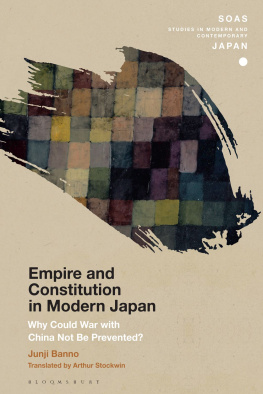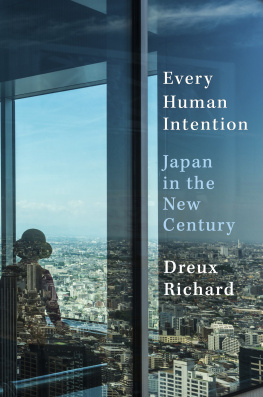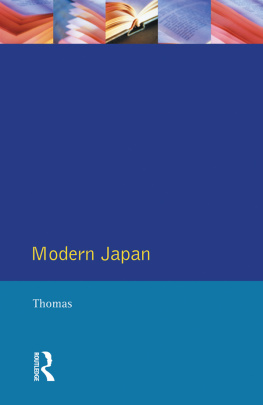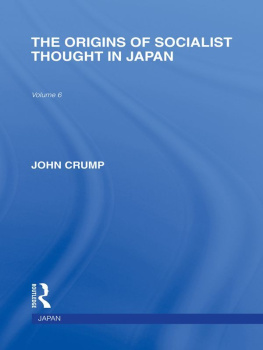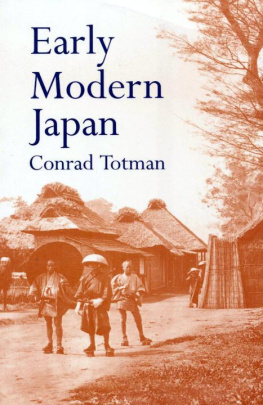Building Japan 18681876
BUILDING JAPAN: 18681876
All rights reserved in this edition including Title, Preface, Introduction, Notes and Plates.
Japan Library Ltd 1991
First published 1991 by
JAPAN LIBRARY LIMITED
This edition published 2013 by Routledge
Routledge
Taylor & Francis Group
711 Third Avenue
New York, NY 10017
Routledge
Taylor & Francis Group
2 Park Square, Milton Park
Abingdon, Oxon 0X14 4RN
Routledge is an imprint of the Taylor & Francis Group, an informa business
ISBN 1873410050
British Library Cataloguing in Publication Data
A CIP catalogue record for this book
is availble from the British Library
Set in Bembo Roman 13 on 14 point
Keywork by Ann Tiltman
Photosetting by Visual Typesetting
Contents
by Hedenobu Takahide, Mayor, City of Yokohama
by Sir Hugh Cortazzi
by William Elliot Griffis
THE BRUNTON TEXT:
by William Elliot Griffis
THE TEXT of Bruntons work printed here is as edited around 1906 by the American teacher William Elliot Griffis who, in the Postscript, points out that the text available for publication is his condensed and annotated version of the original Brunton manuscript. Furthermore, Griffis admits to leaving out the complete first half of Bruntons record which he describes as historical in form and presumably, given all the existing histories in print at the time, was not considered relevant, nor a commercial proposition.
It is therefore not at all clear how much rewriting Griffis has done, nor how much of the original Brunton text has been omitted, which as far as is known, no longer exists.
Griffis naturally edited the work according to American spelling and stylistic conventions as well as perceived market opportunity, given Japans high profile worldwide after her success in the Russo-Japanese war of 1904-5. Since Brunton would have written in British English, we have tried to honour the style of the original author and returned to British English spelling.
In the same way, preparing the book for an American audience, Griffis changed all Bruntons references to costs from pounds sterling to American dollars, except on a few occasions when he failed to do so. Here we have not attempted to impose any standardisation and left the figures as given by Griffis.
On the other hand, to mark the fact that this is a period work, published in its original form for the first time, the nineteenth-century spelling conventions for the names of Japanese towns and cities, e.g., Tokio for Tokyo, Kioto for Kyoto have been retained, as well as the extensive use of capital letters and the convention for expressing the date. However, the then common practice of accenting the live e as in Kobe and sake has not been followed.
Footnotes
The text references to the original Griffis footnotes are printed in Bold (heavier type); the text references to the footnotes by Hugh Cortazzi are printed in Roman (lighter type).
BRITISH civil engineer Richard Henry Brunton (1841-1901) came to Yokohama in 1868, the first year of the Meiji Era, and shortly after the port of Yokohama was opened to foreign trade. He was the first of a number of so-called o-yatoi-gaijin (foreign employees) contracted to the Meiji government, which was seeking to quickly modernise Japan by introducing foreign technology. R. H. Bruntons work was to construct lighthouses throughout Japan, based on treaties concluded between the then defunct Tokugawa shogunate and the American and European governments. To promote foreign trade, it was necessary to build lighthouses for the safe navigation of vessels that entered and departed from the Japanese ports that had already been opened.
Bruntons efforts were outstanding. He constructed more than 30 lighthouses in important spots throughout Japan during his rather short eight-year stay until his departure from Japan in 1876. Being among the first foreign professionals to be employed by the Meiji government, he inevitably ran into many difficulties in his relations with Japanese government officials who were drawn exclusively from the class-conscious warrior samurai tradition.
Brunton had been engaged in railway construction during his earlier days in Great Britain, and had established a broad civil engineering career. Thus, he was asked for technical advice on railway construction as well as telecommunications, harbour works and many other projects being undertaken by the Meiji government. In particular, because the Lighthouse Department to which Brunton was appointed was located in Yokohama, the city became centre stage for modern Western engineering transplanted to Japan by Brunton. In the central part of Yokohama City we can still see much of Bruntons legacy today in roads, parks, drainage systems and bridges, and we are proud to recognise them as Japans firsts.
This year marks the 150th anniversary of Bruntons birth. On this occasion, in recognition of his great contributions that made Yokohama a modern city, we decided to organise various Brunton anniversary events in cooperation with the Japan Society of Civil Engineers, the Yokohama Chamber of Commerce and Industry and many other interested parties. Our plan includes a series of programmes both in Japan and Great Britain highlighting Bruntons achievements.
In his later years Brunton, known as the Father of Modern Engineering in Japan, wrote his memoirs about his experiences in Japan. We feel it most meaningful and an honour for us to be able to assist in the publication of this valuable record in England this year, as part of our Brunton memorial events.
In closing, I must state my deep gratitude for the courtesy and support of former British Ambassador to Japan, Sir Hugh Cortazzi, and many others involved in this project.

HIDENOBU TAKAHIDE, DR. ENG.
Mayor
City of Yokohama
SUMMER 1991
BY HUGH CORTAZZI
RICHARD Henry Brunton was born in Fetteresso, Kincardineshire, Scotland, in December 1841. His father was a Captain in the Royal Navy.
After attending private schools in Scotland, Brunton in 1856 began his articles as an engineering student under a Mr P. D. Brown in Aberdeen; in 1858 he was transferred to the supervision of Mr John Willet also of Aberdeen. He completed his articles in 1860 and remained in Mr Willets employ working on the construction of various railways in the Scottish Highlands. In 1864 he moved to London and was employed first on parliamentary work in connection with the London and South Western Railway. In 1866 he became principal assistant to a Mr Henry Bolden and was involved in work for the Midland and other railways.
In February 1868 Brunton, who became an Associate of the Institution of Civil Engineers in April that year, was appointed, on the recommendation of Messrs David and Thomas Stevenson of the Scottish Lighthouse Board, as Chief Engineer to the Lighthouse Department of the Japanese Government. He arrived in Japan in August 1868 and except for a brief period of home leave remained there until 1876. While in Japan his main responsibility was for the construction of lighthouses but he also became involved with a wide variety of civil engineering projects.





